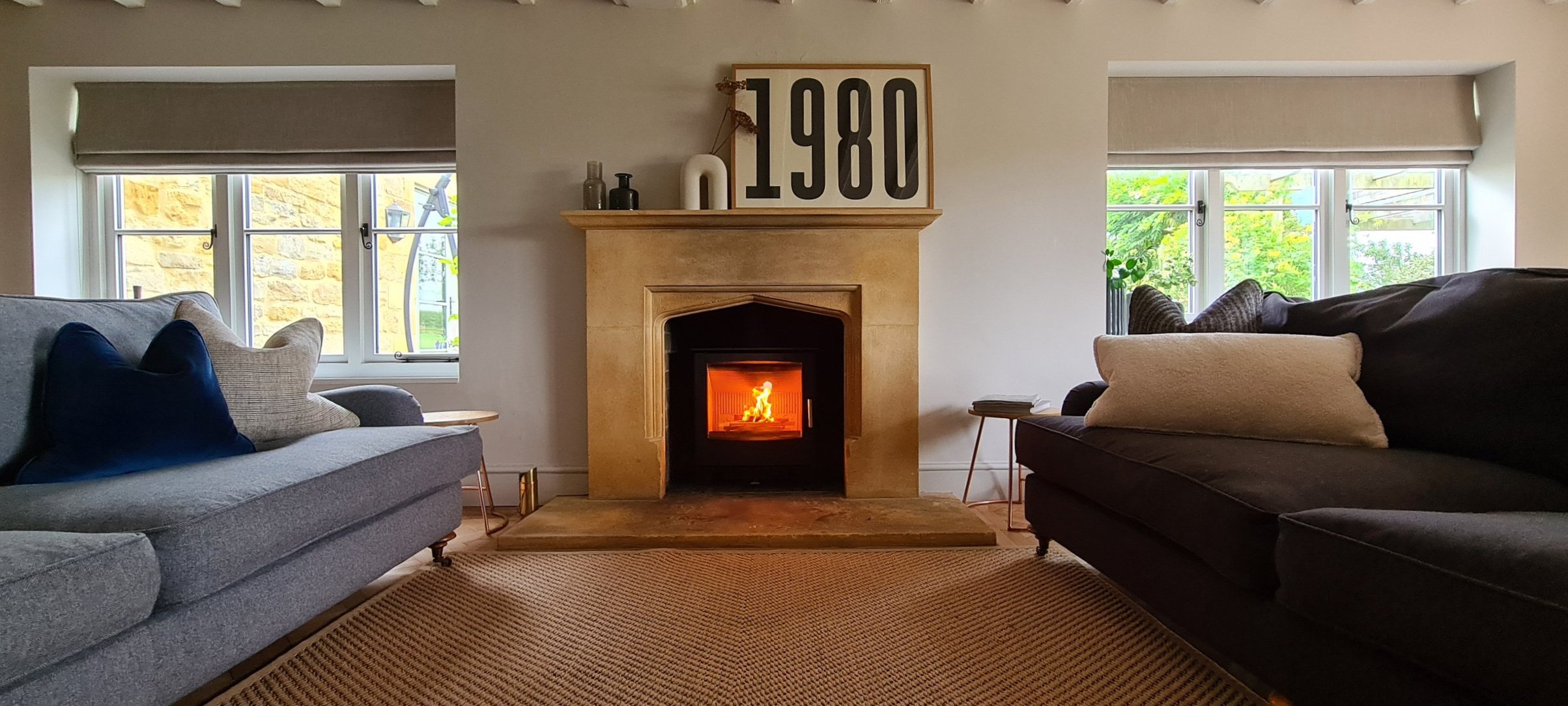
Useful Information
What is the difference between the stoves - they all look the same?
There are lots of differences stylistically; some look traditional, some look modern with simple designs and clean lines. There are also lots of engineering differences.
How do I choose the right one, is it complicated?
You need to like the look of it, you need to work out a budget you’re happy with and the size requirement can be determined like this:
Be sure to measure the approximate width, length, and height of your room in metres with a tape measure. It is possible to calculate the cubic area of the room by multiplying the width, length, and height. Then just divide the cubic area by 14 to get a rough idea of kW output.
For example: 5m(w) x 5m(l) x 2.5m(h) = 62.5m ÷ 14 = 4.46
This calculation is only the start of the conversation there are lots of variables that can make big differences; the age of the property; insulation; location; how many external walls are in the room; glazing; even how warm you like to be.
For most standard size rooms a 5kW stove is more than enough
What's the difference between multi-fuel and wood burning stoves?
Coal needs to burn on a grate so that it can receive air from underneath it. Wood burns better receiving air from above. So a multifuel stove has to provide 2 air delivery systems. Because multi-fuel stoves have a grate they also have an ash pan, this can be an attractive addition for some people. We have plenty of examples of both at the showroom.
Are stoves eco-friendly?
This is a massive question. Is it eco-friendly compared to coal? Yes. An ash tree could be considered matured after 20 years so this would return some carbon dioxide to the atmosphere that was only captured in the 21st century. Burning coal or gas or any fossil fuel is returning carbon dioxide to the atmosphere and adding it to the equation that was captured when there were dinosaurs. Is burning wood as eco-friendly as solar or air-source heat pumps etc? No, not in principle but there is a huge environmental and financial cost in installing and manufacturing these systems, it can take many years for them to become carbon net zero and can cost tens of thousands of pounds - money that most people don’t have.
Modern efficient wood burning stoves can keep you warm on 4 or 5 logs an evening a fraction of the amount people have always burnt on open fires.
Here is a lot of good reading: is wood burning CO2 neutral
What are DEFRA approved stoves?
A DEFRA Smoke Exempt Appliance, is a wood burning stove which has been tested and passed the UK Government's Department of Environment, Farming and Rural Affairs (DEFRA) criteria for emission levels and the amount of smoke that it will be allowed to produce during all stages of normal operation. Generally, a 'DEFRA Approved' wood burning stove has been modified by the manufacturer to limit the amount that it can be 'closed down' or in other words, by how much it can be starved of air which creates smoky combustion. A DEFRA Approved wood burning stove will therefore always provide the minimum level of combustion air so that the wood burns efficiently without producing unnecessary smoke, thus ensuring that the wood burning stove complies with the Clean Air Act. A DEFRA Approved wood burning stove will therefore allow you to burn wood legally in a UK Smoke Control Area – most of the UK's cities and large towns. Larger wood burning stoves with greater outputs are not always suitable for UK Smoke Controlled Areas.
Do the wood burning stoves need any other certification?
The wood burning stove will be certified by the manufacturer and have an energy rating. Some manufacturers include a warranty card for the owner to complete and return. The installer should provide a data plate for the appliance to go up in the house and HETAS will send certification to the owner once the installer has registered the install with them.
Can a wood burning stove save money?
Compared to an open fire it will save a fortune. There are a very efficient source of heat that can be a cheaper alternative to always relying on gas central heating.
1 cubic metre of seasoned wood costs around £90-120 and 2 cubic metres should last from September to May if you are using the wood burning stove most nights of the week.
Will it add value to my home?
No. We have tried to prove that it does but there is no evidence of this online from estate agents. However it is a feature that estate agents always photograph sometimes more than once so we do believe it does help sell to a house compared to a similar house without a wood burning stove.
How do it maintain everything?
The chimney needs to be swept at least once a year, that is a MUST. The stove should also serviced once a year.
The body of the wood burning stove can be wiped with a damp cloth. The bricks can be removed and the ash can be vacuumed out. The glass can be cleaned with a glass cleaning product or damp newspaper dipped in ash.
What should I do in terms of wood storage?
Wood is best stored where the sun and wind can get to it with some roof cover from direct rain overhead. Covering it with tarpaulin or plastic is the worst because it will sweat and rot. The best and most readily available types of wood to burn are Ash, Beech and Birch. Any wood you buy should have a moisture content of no more than 20%. Wood suppliers can only sell wood that is labelled Ready to Burn and has the been seasoned down to the correct moisture content.
